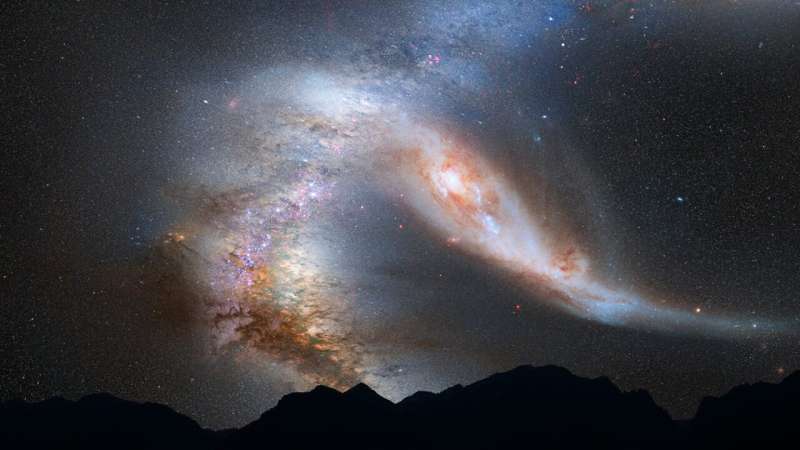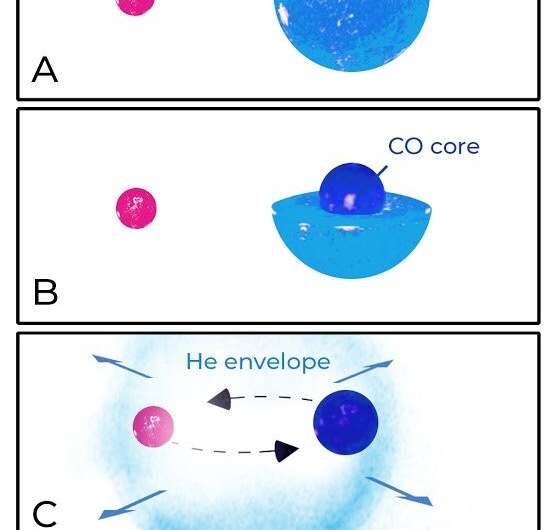Scientists puzzle over massive star system

Earlier this year, an international team of scientists announced the second detection of a gravitational-wave signal from the collision of two neutron stars. The event, called GW190425, is puzzling: The combined mass of the two neutron stars is greater than any other observed binary neutron star system. The combined mass is 3.4 times the mass of our sun.
A neutron star binary this massive has never been seen in our galaxy, and scientists have been mystified by how it could have formed—until now. A team of astrophysicists from the ARC Centre of Excellence for Gravitational Wave Discovery (OzGrav) think they might have the answer.
Binary neutron stars emit gravitational waves—ripples in space-time— as they orbit each other, and scientists can detect these waves when the neutron stars merge. The gravitational waves contain information about the neutron stars, including their masses.
The gravitational waves from cosmic event GW190425 tell of a neutron star binary more massive than any neutron star binary previously observed, either through radio-wave or gravitational-wave astronomy. A recent study led by OzGrav Ph.D. student Isobel Romero-Shaw from Monash University proposes a formation channel that explains both the high mass of this binary and the fact that similar systems aren't observed with traditional radio astronomy techniques.
Romero-Shaw says, "We propose that GW190425 formed through a process called 'unstable case BB mass transfer," a procedure that was originally defined in 1981. It starts with a neutron star that has a stellar partner: a helium (He) star with a carbon-oxygen (CO) core. If the helium part of the star expands far enough to engulf the neutron star, this helium cloud ends up pushing the binary closer together before it dissipates. The carbon-oxygen core of the star then explodes in a supernova and collapses to a neutron star."

Binary neutron stars that form in this way can be significantly more massive than those observed through radio waves. They also merge very fast following the supernova explosion, making them unlikely to be captured in radio astronomy surveys.
"Our study points out that the process of unstable case BB mass transfer could be how the massive star system formed," says Romero-Shaw.
The OzGrav researchers also used a recently-developed technique to measure the eccentricity of the binary—how much the star system's orbital shape deviates from a circle. Their findings are consistent with unstable case BB mass transfer.
Current ground-based gravitational-wave detectors aren't sensitive enough to precisely measure the eccentricity; however, future detectors—like space-based detector LISA, due for launch in 2034—will allow scientists to make more accurate conclusions.
More information: Isobel M Romero-Shaw et al. On the origin of GW190425, Monthly Notices of the Royal Astronomical Society: Letters (2020). doi.org/10.1093/mnrasl/slaa084
Journal information: Monthly Notices of the Royal Astronomical Society





















